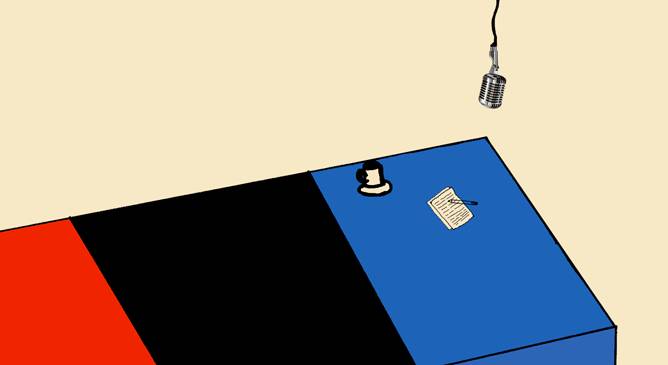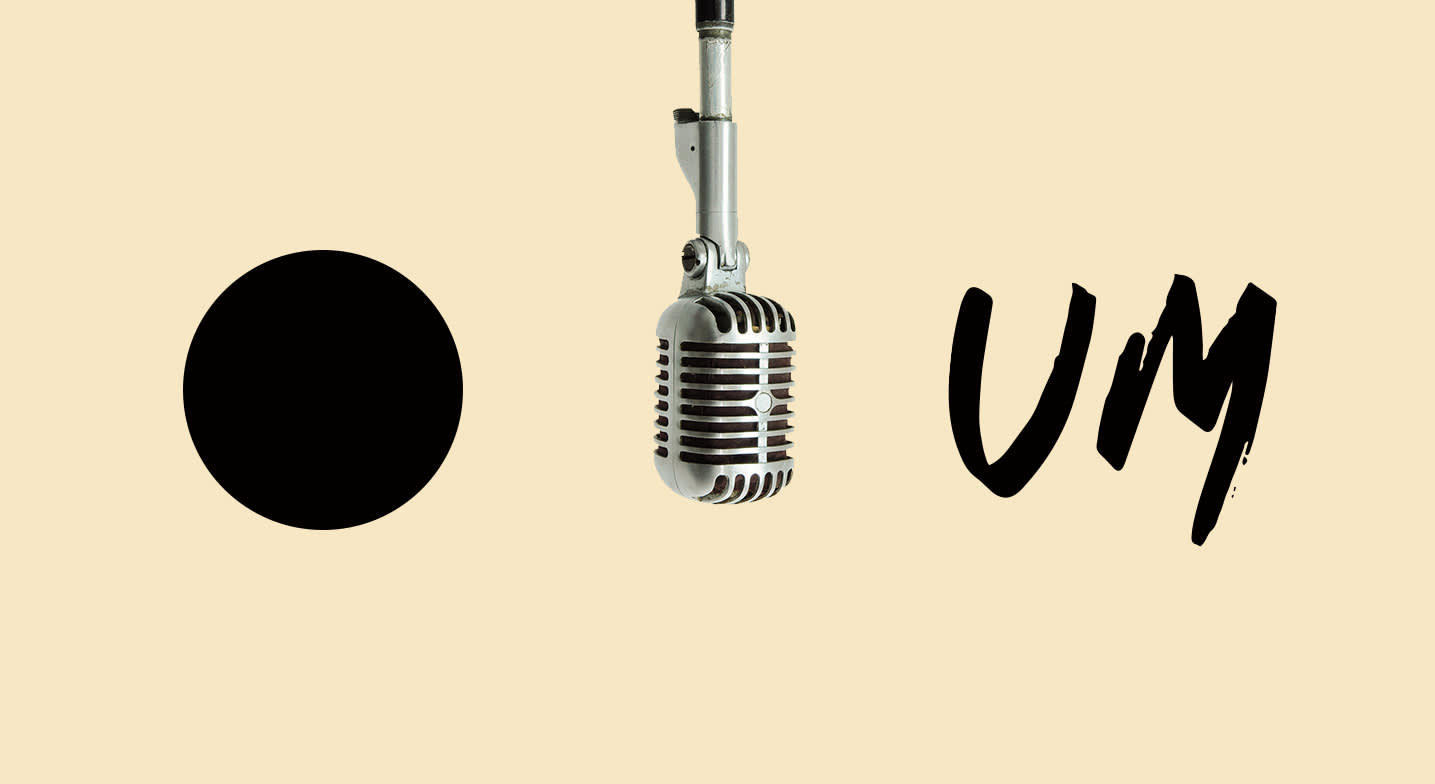We are living in a TED Talk world. One filled with self-examination, constant questions, and a “plague of pregnant pauses” that author Teddy Wayne, in a recent New York Times article, famously dubbed “NPR voice.”
But there was a time when there were no “umms” on the radio, and barely a stutter. In the early days of audio and broadcasting, voices boomed and had a staccato rhythm — a style described as “newsreel voice.” It was a voice of authority with nasal, non-emotive tones.

"That was the World War II voice, when radio was really dominant, and of course, people had an urgent interest in the news of the day," says Andie Tucher, a historian, journalist, and director of the Ph.D. program in communications at Columbia University. "That's where you get the legendary CBS reporters like Edward R. Murrow, whose voice, to this day, one thinks of as shaping radio."
"I think of today's podcast voice and podcasts, in general, as the New Journalism of audio."
And Murrow's voice was perfectly suited for the times, adds Tucher. CBS did not want emotion and excitement or even distinctive voices involved in telling the news. Murrow famously recruited Eric Sevareid, who became known for writing elegant commentaries and delivering them in sonorous tones. But even Sevareid was once reprimanded by a news director when his voice cracked during one report.
"At that time, that was really unheard of," says Tucher. "What we wanted on the radio was neutral, American voices, and it was calming and reasonable and the current events warranted that."
Also, the newsreels were scripted and short, as opposed to today's more casual style of news and storytelling in podcasts. And with breaking news and a 24/7 cycle, uncertainty is the emotion of the day.
In many ways, today's podcasts are having a big influence on audio even for short news pieces. The podcast is the long-form version of radio, which warrants a more intimate tone, says Tucher.
"I think of today's podcast voice and podcasts, in general, as the New Journalism of audio," says Tucher. "Podcasts have the same kind of stylistic freedom and the quirky voice and the same experimentation that the vanguards of the New Journalism movement had."
The ultimate example of that pause-filled new radio style may be Sarah Koenig of the wildly popular and influential podcast Serial. The podcast's first season looked at the conviction of Adnan Syed for the 1999 death of Hae Min Lee. The second season, which started in December 2015, looks at the case of Bowe Bergdahl. As much as Serial has been hailed for its storytelling, it's also well known for creator Sarah Koenig's ad-lib speaking style.
As Slate.com's Amanda Hess wrote in 2014: "When Serialfirst debuted, I hung on Koenig's every 'umm.' The set-up hit all of my personal pop-cultural indulgences -- a true crime story with a narrative treatment and a strong female protagonist ... but soon, the established trail of the case dried up, and the direction of Serial leaned more and more on Koenig's own detective skills. Her investigative method took the form of searching conversations, not hard-nosed interrogations. I want to know. I want to know. I want to know. Do I have an ending?"
Ann Cooper, NPR’s first Moscow bureau chief in 1987 and a journalism professor at Columbia, says that when she started at NPR, she was very conscious of her voice and kept trying to perfect it along the organization’s directive: Imagine you are telling this story to your mother. “There’s always been an emphasis on being a little more casual than that ‘voice of God’ broadcast voice,” Cooper says. In 2008, This American Life broadcast “The Giant Pool of Money,” an episode about the financial crisis. “That was really notable for its reporting style and its voice,” Cooper said. “The reporting here is grounded in characters and that’s what great storytelling can do.”

Still, the “umms” and the questions and the stutters can get, well, umm, annoying.
“I see it in a lot of places,” says Teddy Wayne. “Surely, on today’s popular podcasts. It’s that now, with the abundance, it’s easy to recognize the fraudulence of it and the amped up improvisatory tone just strikes as overacting. ” Wayne points out Michelle Obama’s speech at the 2012 Democratic National Convention as an example of this amped-up stutter. While the speech was praised for its intimacy by most, some thought that she was overacting.
Yet many of today’s podcasts include a different kind of speech than the radio days of old. “In an old news-style broadcast, you rarely had lengthy stories, so [the rise of NPR voice is] almost like the rise of creative nonfiction in audio form,” says Wayne.
Across the Atlantic, there is discussion about what’s next for radio voices, as many in the UK acknowledge that more voices must be heard. “There is a lot of talk of identity politics, and the BBC has been concerned about including more voices of women as well as more people of different backgrounds’ voices being heard,” says Paddy Scannell, a British media scholar and historian of the BBC. Scannell adds that we live in an unscripted 24/7 news cycle and that, without a doubt, we will get more and more of this, well, uncertain style. In an interview with Alec Baldwin on the WNYC radio program Here’s the Thing, Ira Glass of This American Life, arguably the father of this new radio voice, said his own style had “anti-authoritarian roots.”
So, if you want the truth, umm, maybe you just gotta deal with it.




